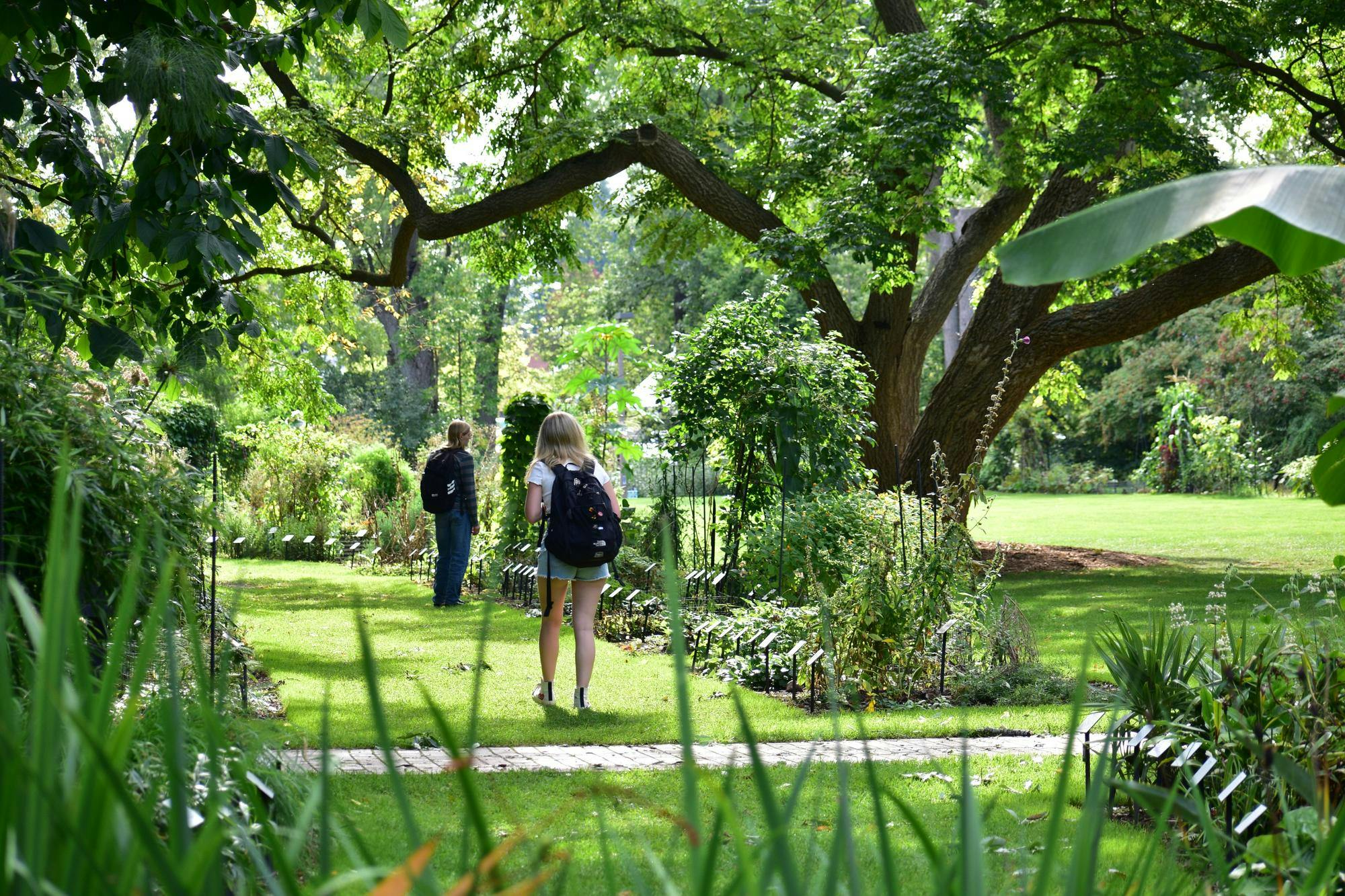As the days get shorter and colder, many students are reminded that winter is fast approaching; so do the plants in the W.J. Beal Botanical Garden and their human caretakers.
The W.J. Beal Botanical Gardens, celebrating its 150th anniversary this year, is a collection of roughly 1,800 native and non-native plants that are significant to the research or education of plant species. The collection and its caretakers are dedicated to educating people about the importance of plant species, both native and non-native.
However, during the winter months, the gardens are covered in snow and ice, just like every other surface on campus. This begs the question: What do the botanical gardens do during the winter?
Katie Fry, the collections manager at the gardens, explained that around 200 plants are dug up in preparation for winter. These 200 are chosen because they are not hardy enough for Michigan's climate and would otherwise need to be replanted in the spring.
"We'll dig them up; we'll take them to a greenhouse and repot them," Fry said. "We also do cuttings as well and collect seed."
These plants are then taken to the Beaumont Nursery, which houses and processes all the trees that MSU plants on campus, where they will remain until springtime.
Plants that aren't dug up are left in the gardens to go dormant during the winter. These are mainly native perennial plants that have evolved to adapt to Michigan's climate. However, there are some non-native perennials that are able to survive a Michigan winter.
Research is continued during the winter in the form of data collection for educational purposes on the plants.
"Every plant in the garden is tracked for physical characteristics such as height, petals, seed type, color and structure as well as where the plant originated from and its habitat conditions," Fry said.
Following the theme of education, the gardens also run programs during the winter aimed at educating the MSU community.
The gardens host a weekly "Lunch and Learn" webinar to discuss plants that are related to that week's theme. The webinars run from 12:10 to 1:00 p.m. every Wednesday.
The gardens are also collaborating with the Broad Art Museum to present educational and relatable exhibits meant to showcase the garden’s collection and importance.
One of these exhibits, "Beal Botanical Garden: Celebrating 150 Years of People, Plants, and Place," is meant to showcase the history and evolution of the gardens into a campus landmark.
The other, called "Deep Rooted," is a guided tour series led by Maeve Bassett, the Beal Garden’s Education Director. This guided tour will showcase the relationship between humans and plants as it touches on topics such as historical and social narratives surrounding plants.
The tour runs from 1:00 p.m. to 2:00 p.m. and registration is on the Beal Garden's website, where patrons can see the remaining tour dates.
Support student media!
Please consider donating to The State News and help fund the future of journalism.
Discussion
Share and discuss “What do the Beal Gardens do during the winter?” on social media.






